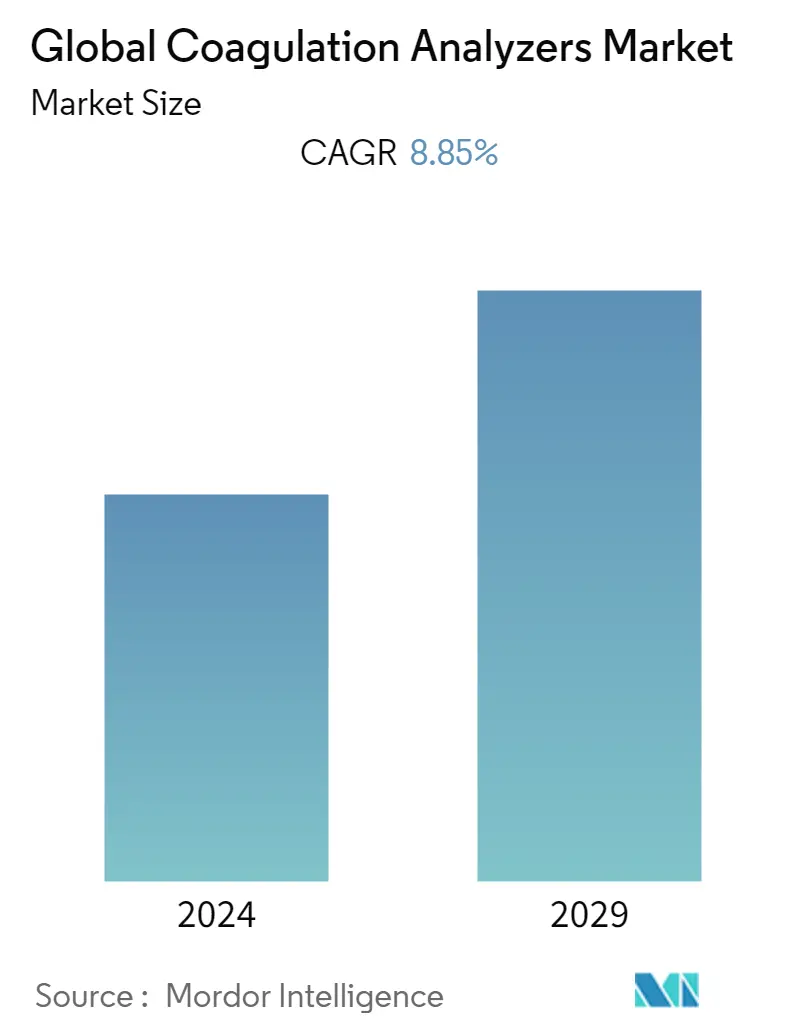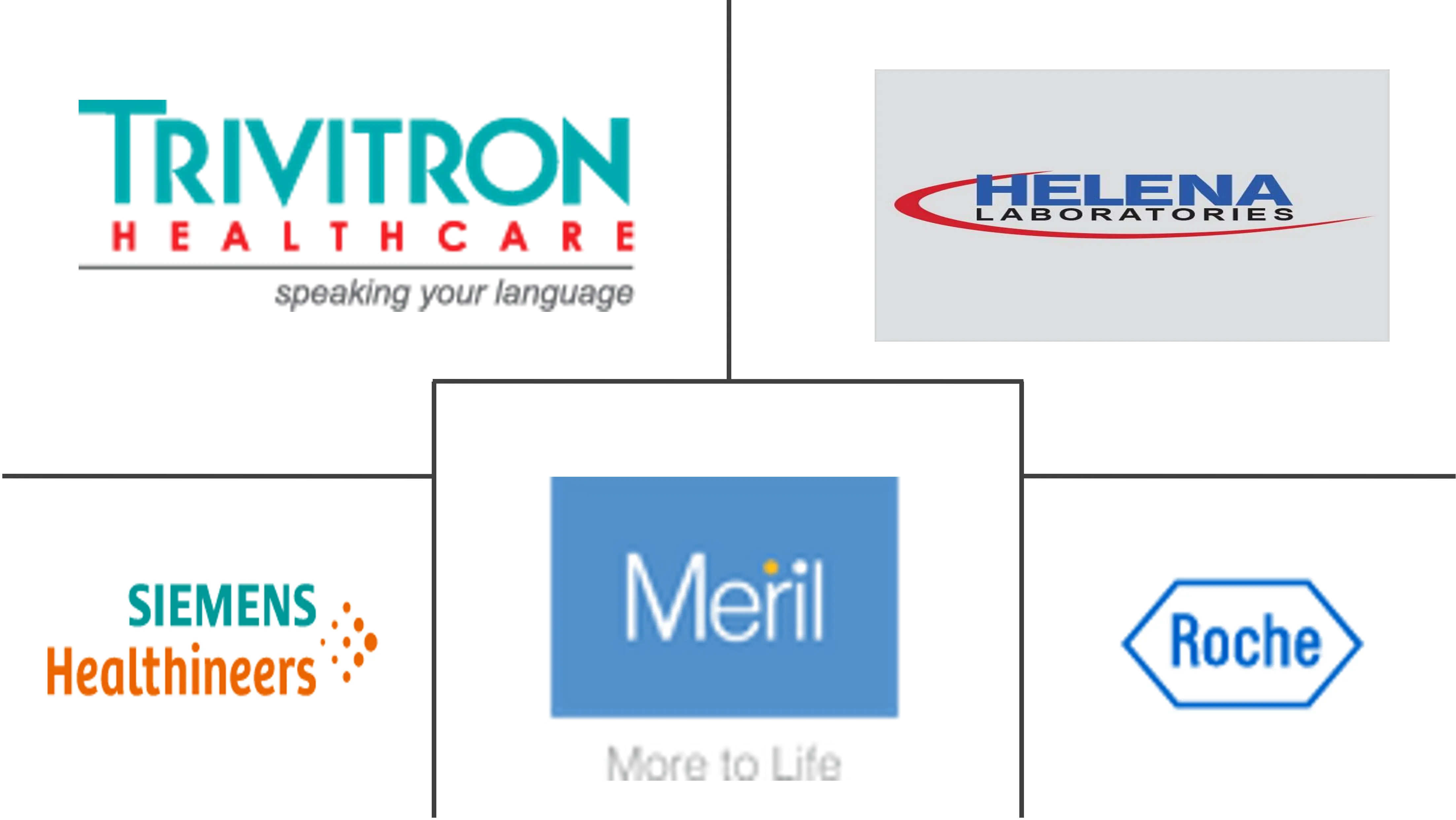Market Size of Global Coagulation Analyzers Industry

| Study Period | 2019 - 2029 |
| Base Year For Estimation | 2023 |
| CAGR | 8.85 % |
| Fastest Growing Market | Asia Pacific |
| Largest Market | North America |
| Market Concentration | Medium |
Major Players
*Disclaimer: Major Players sorted in no particular order |
Need a report that reflects how COVID-19 has impacted this market and its growth?
Coagulation Analyzers Market Analysis
The coagulation analyzers market is expected to grow at a CAGR of around 8.85% over the forecast period, 2022-2027.
The COVID-19 pandemic has affected the economics and sectors of many different countries due to lockdowns, travel restrictions, and business closures. The outbreak of COVID-19 causes the global shutdown which compelled the manufacturers of coagulation analyzers to halt manufacturing and distribution. The COVID-19 pandemic had a huge impact on the coagulation analyzer market. According to a November 2021 study titled "Meta-analysis of coagulation parameters connected with sickness severity and bad prognosis of COVID-19," coagulation problems may be viewed as risk factors for the severity and mortality of COVID-19. In addition, according to a February 2022 update by the National Institutes of Health, the panel advises testing hospitalized COVID-19 patients for thromboembolic disease if they experience a sudden localized loss of peripheral perfusion or a quick decline in pulmonary, cardiac, or neurological function. Therefore, it is anticipated that these studies will boost COVID-19 patients' need for coagulation analyzers, fueling the market's growth.
Further, the global coagulant analyzer market is driven by the increasing prevalence of chronic blood disorders, rising geriatric population coupled with the increasing prevalence of chronic diseases, and increasing laboratory automation. The increasing prevalence of chronic blood disorders is a major factor driving the market's growth. One of the key aspects influencing the market under study is the rising frequency of chronic blood disorders, which will increase the demand for coagulation analyzers. The Global Hemophilia Care 2020 study states that there have been 393,658 bleeding disorders recognized and documented globally over time, including 241,535 cases of hemophilia, and 87,729 cases of von Willebrand disease, and 64,394 cases of other bleeding disorders. As a result, the adoption of coagulation analyzers will be greatly boosted by the rising number of patients with blood disorders. In the United States, there were approximately 21,250 new instances of chronic lymphocytic leukemia in 2021, according to reports from the American Cancer Society (CLL). By examining blood cells that have been altered by leukemia, the illness is identified. Therefore, it is thought that the increasing number prevalence linked to chronic lymphocytic leukemia would increase the demand for coagulation tests, which will then propel market expansion. Product launches are another key factor in market growth. For instance, in July 2020, Automated Blood Coagulation Analyzers CN-6500/CN-3500, a novel product in the hemostasis sector, were introduced by Sysmex Corporation. With just one instrument, the new product may be used to measure all of the blood coagulation testing criteria, including molecular indicators for blood coagulation. Thus, the abovementioned factors are likely to increase market growth.
However, the high cost of fully automated coagulation analyzers and the slow adoption of advanced hemostasis instruments in developing and underdeveloped economies are restraining the market's growth.
